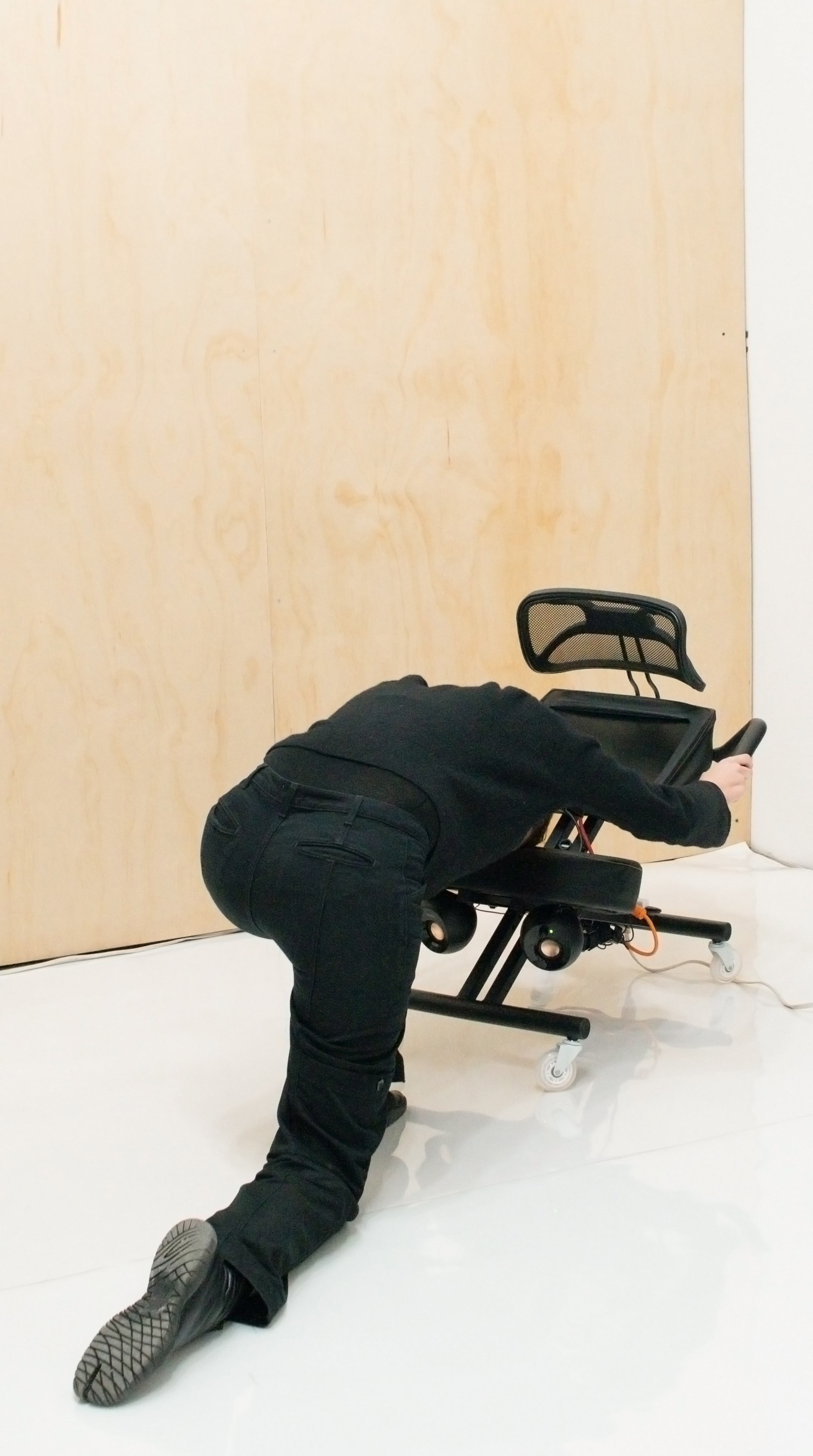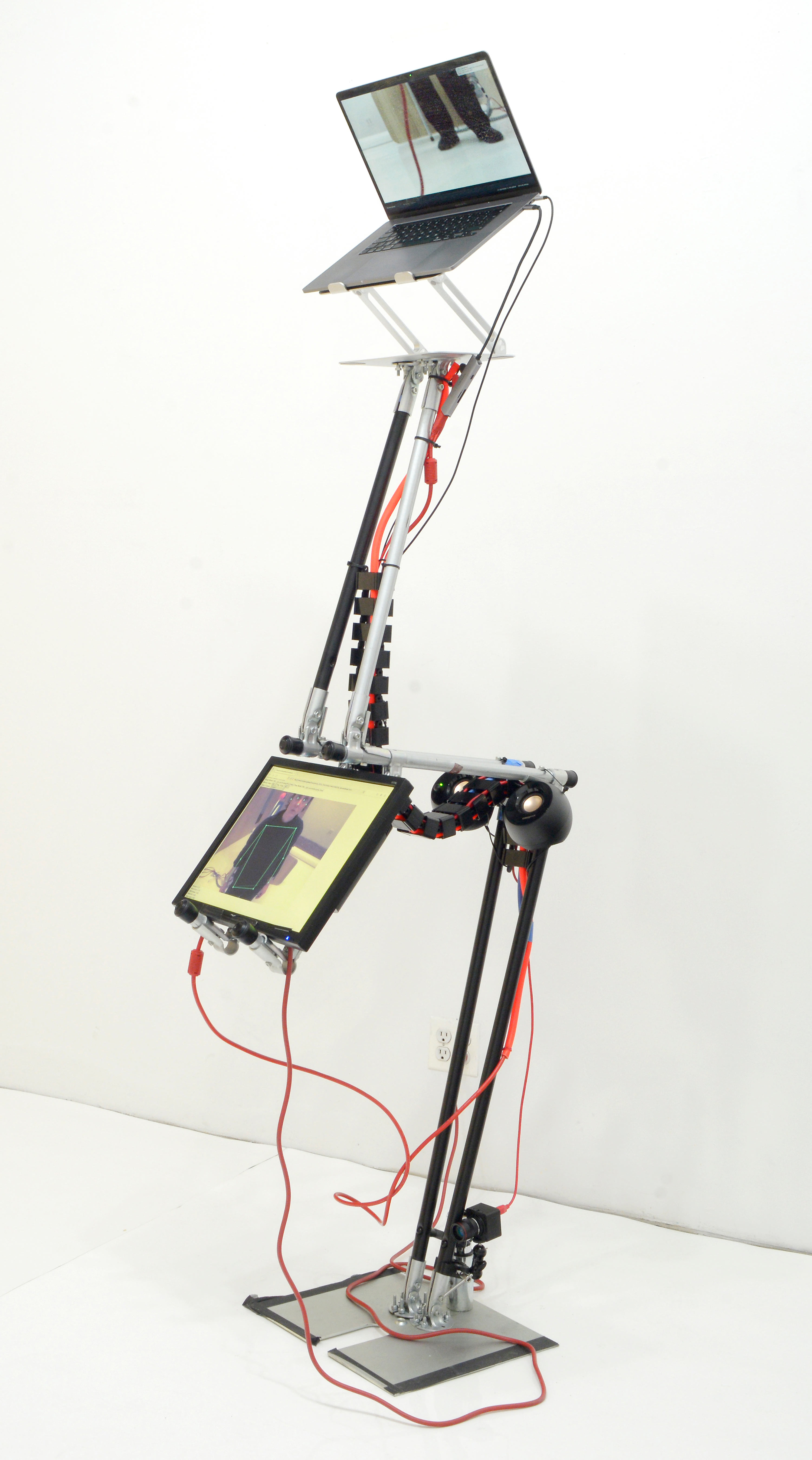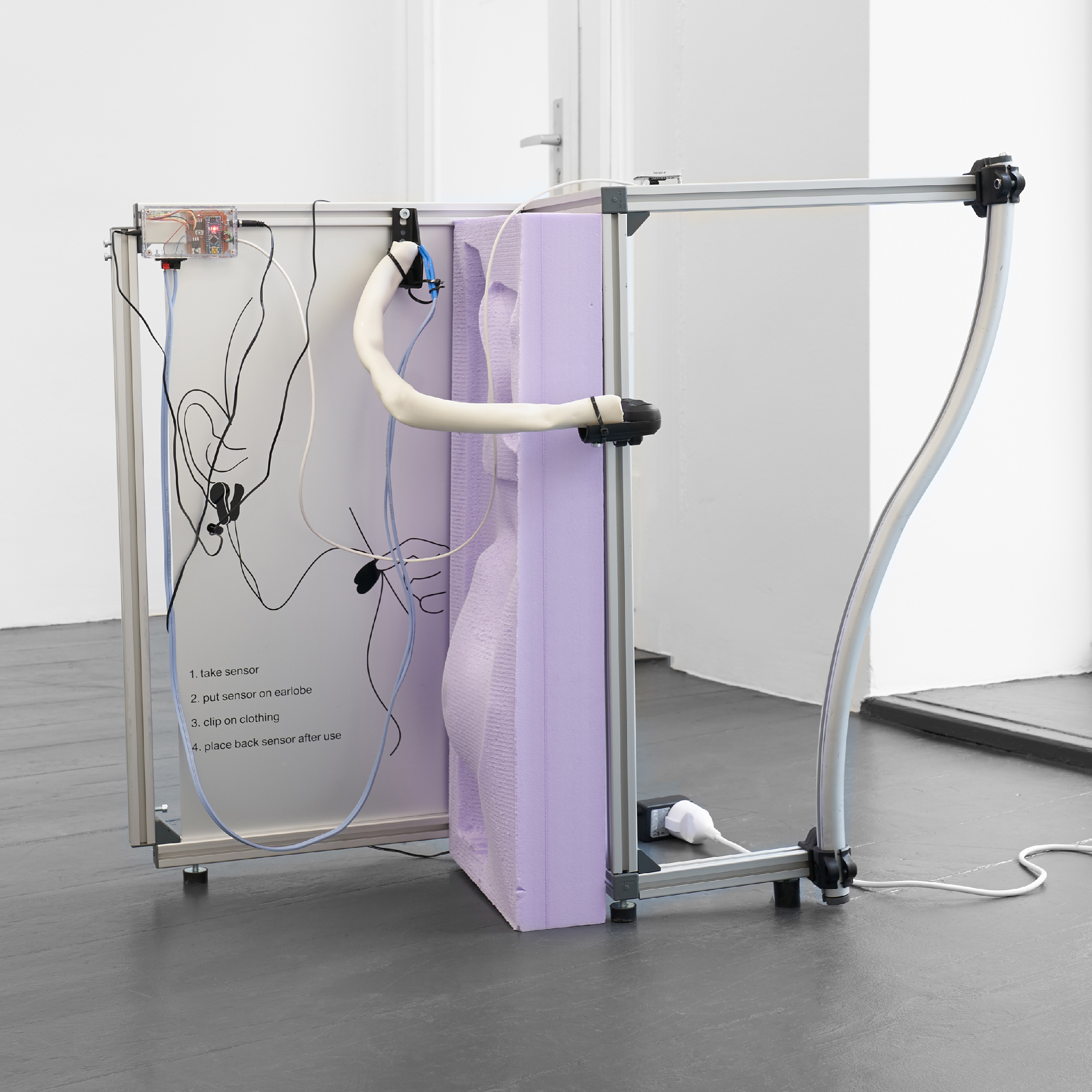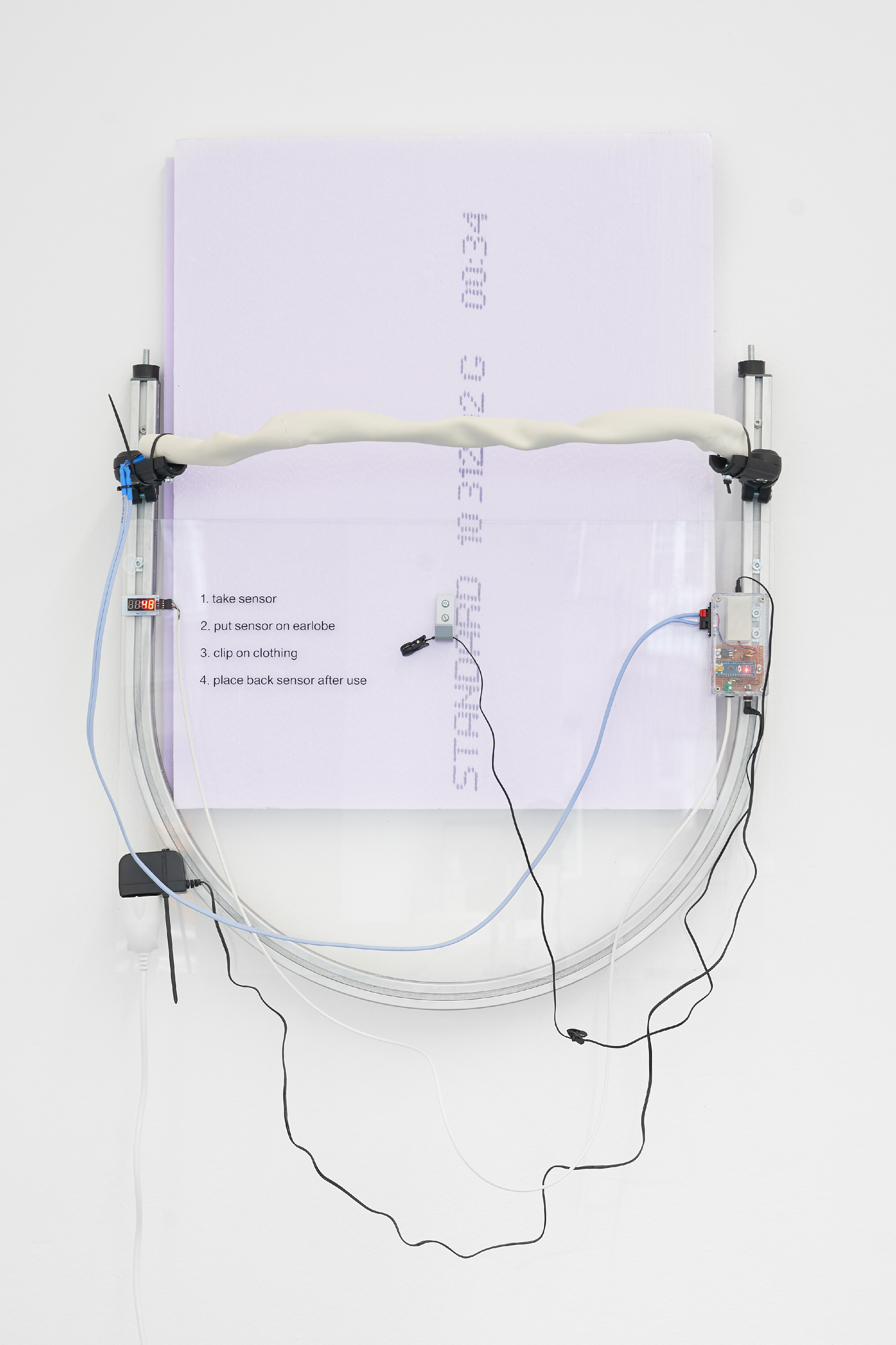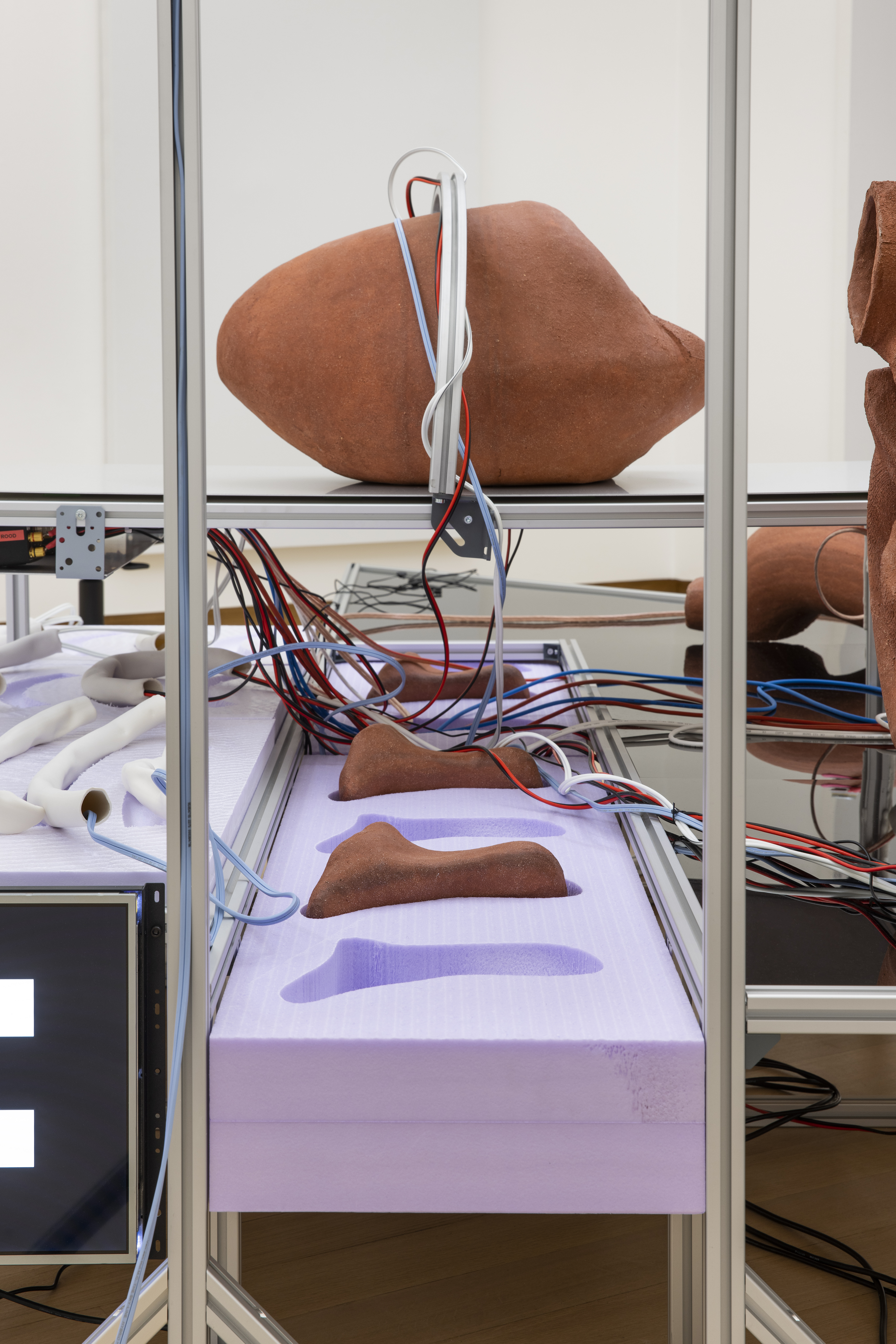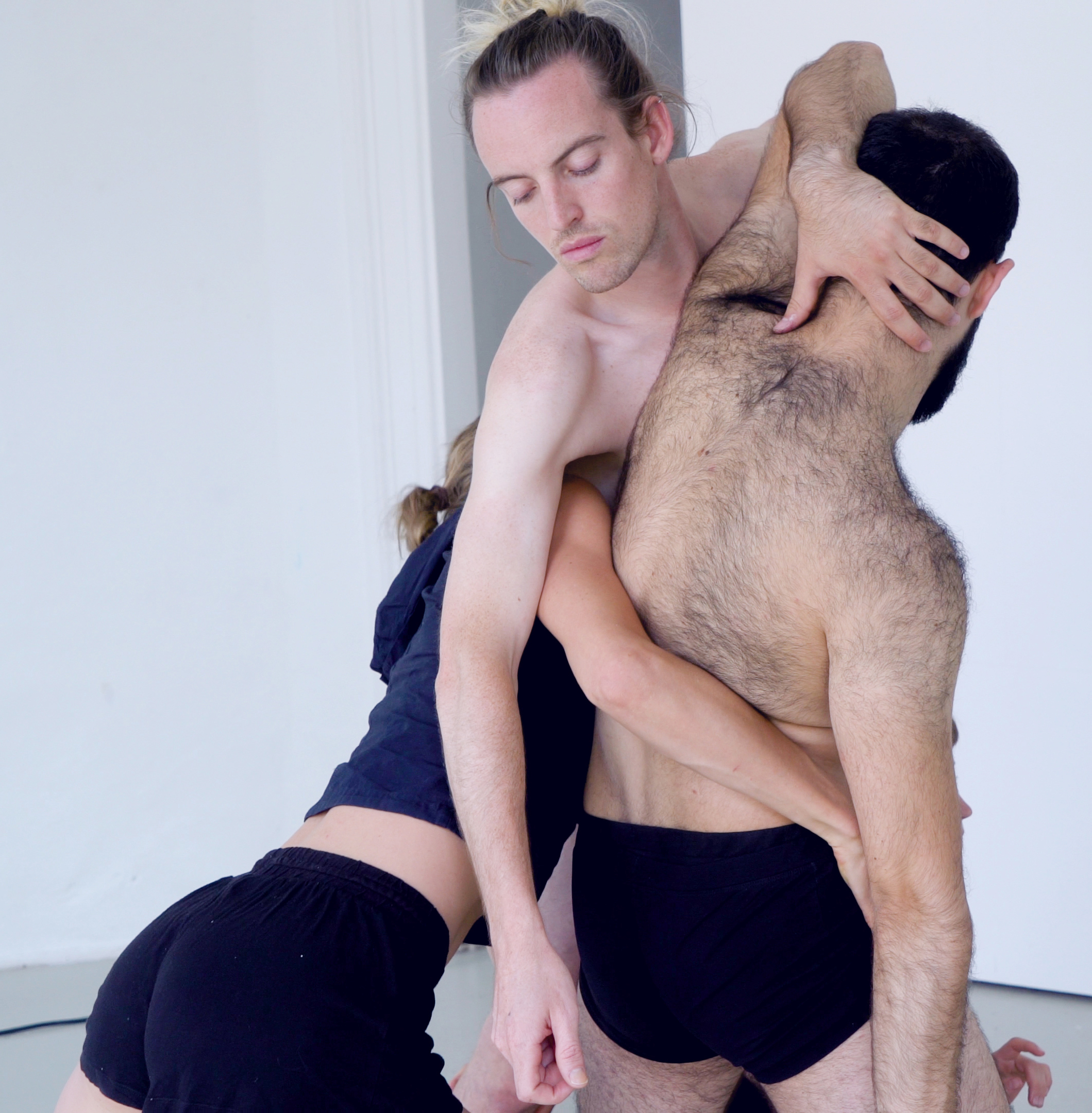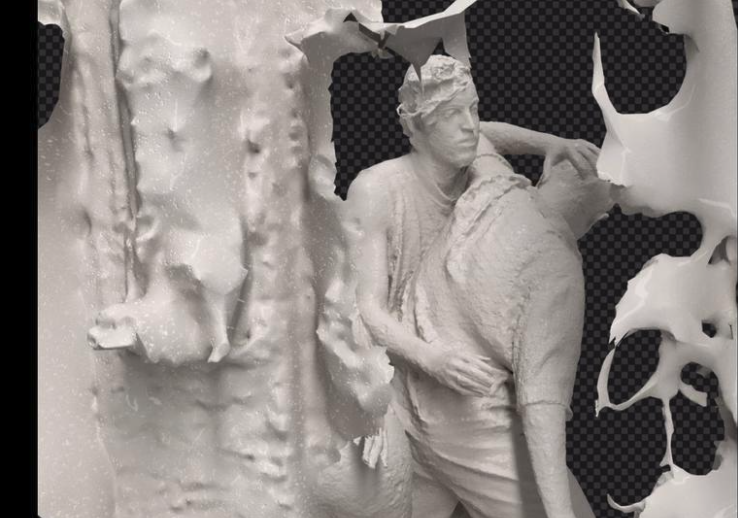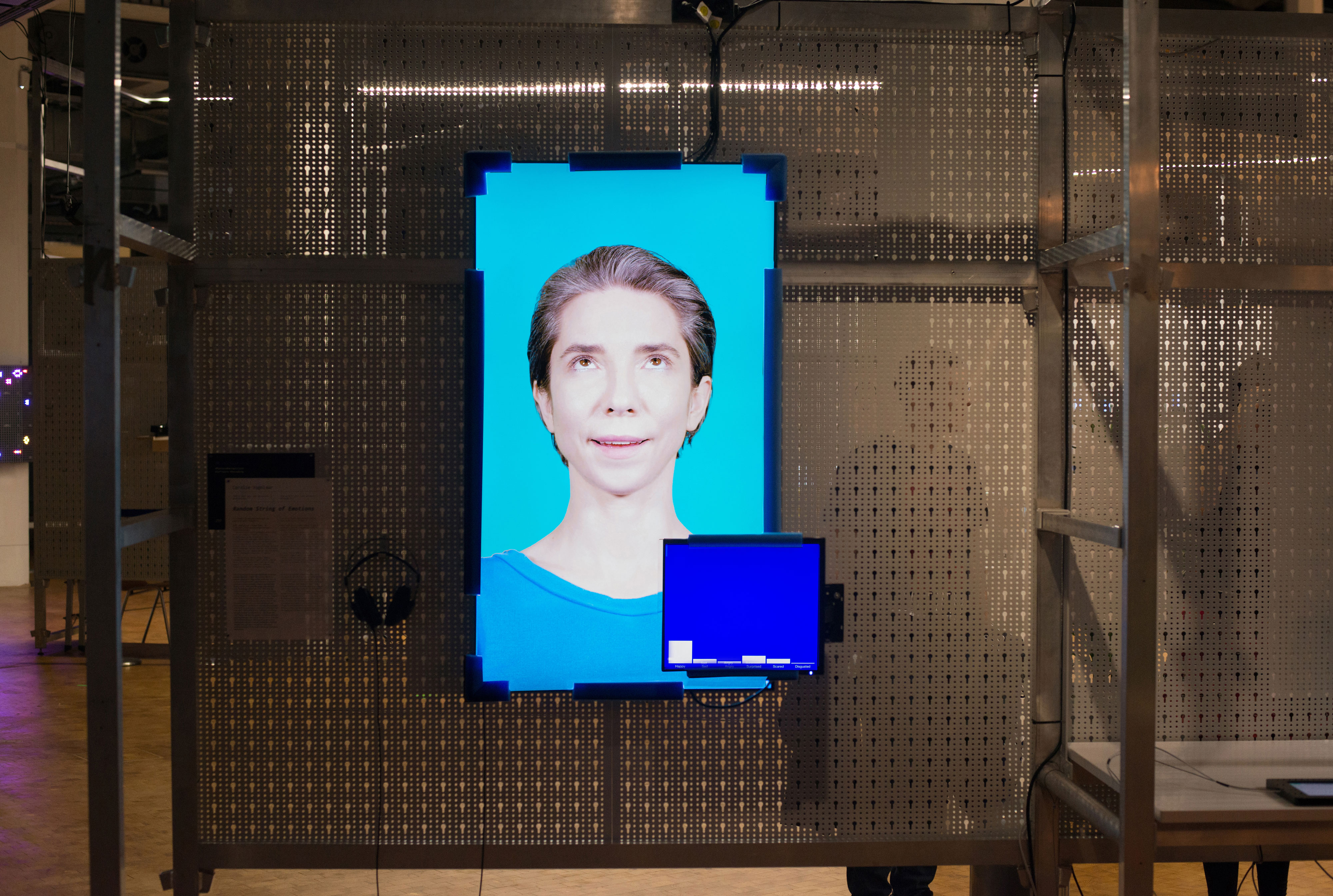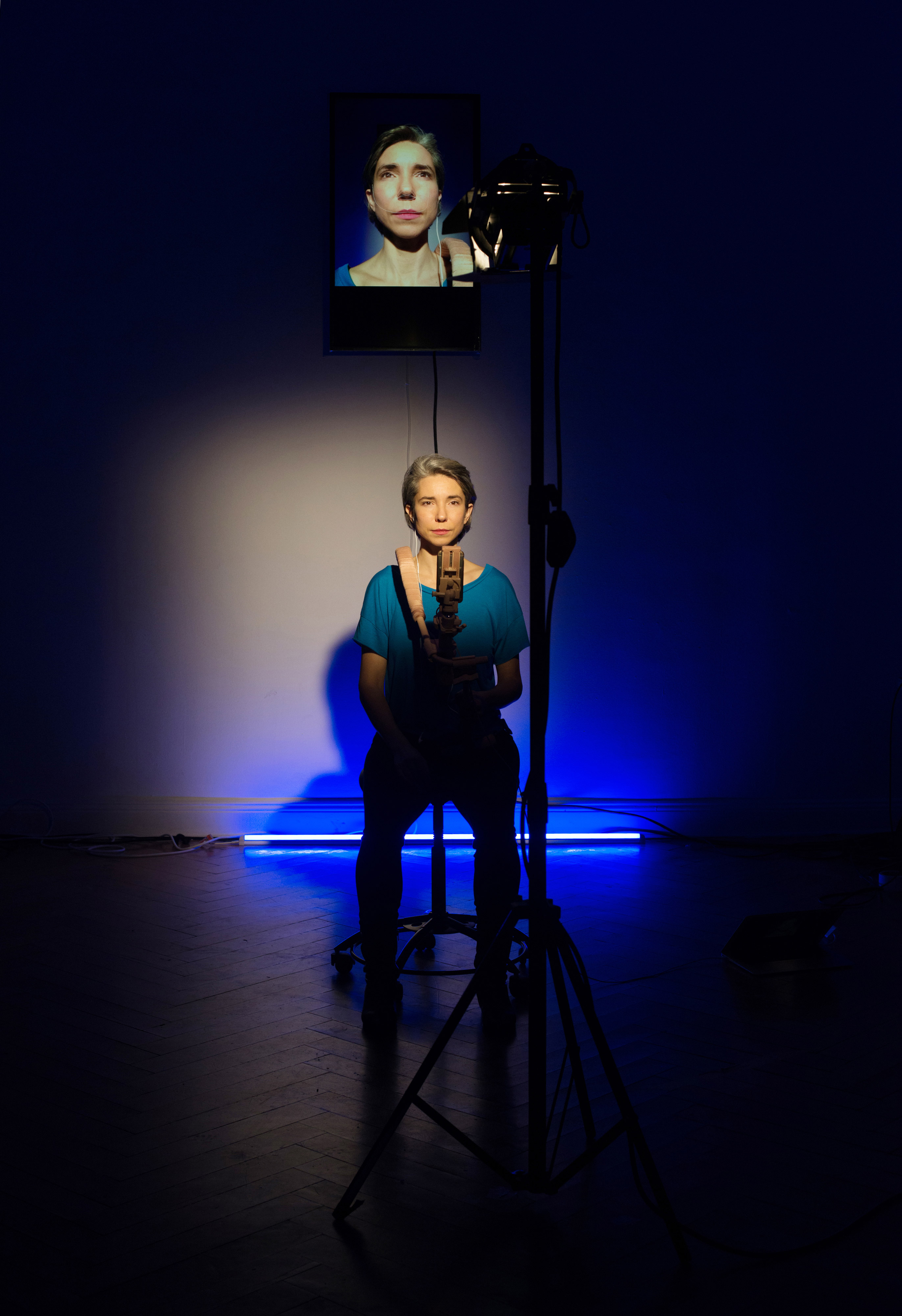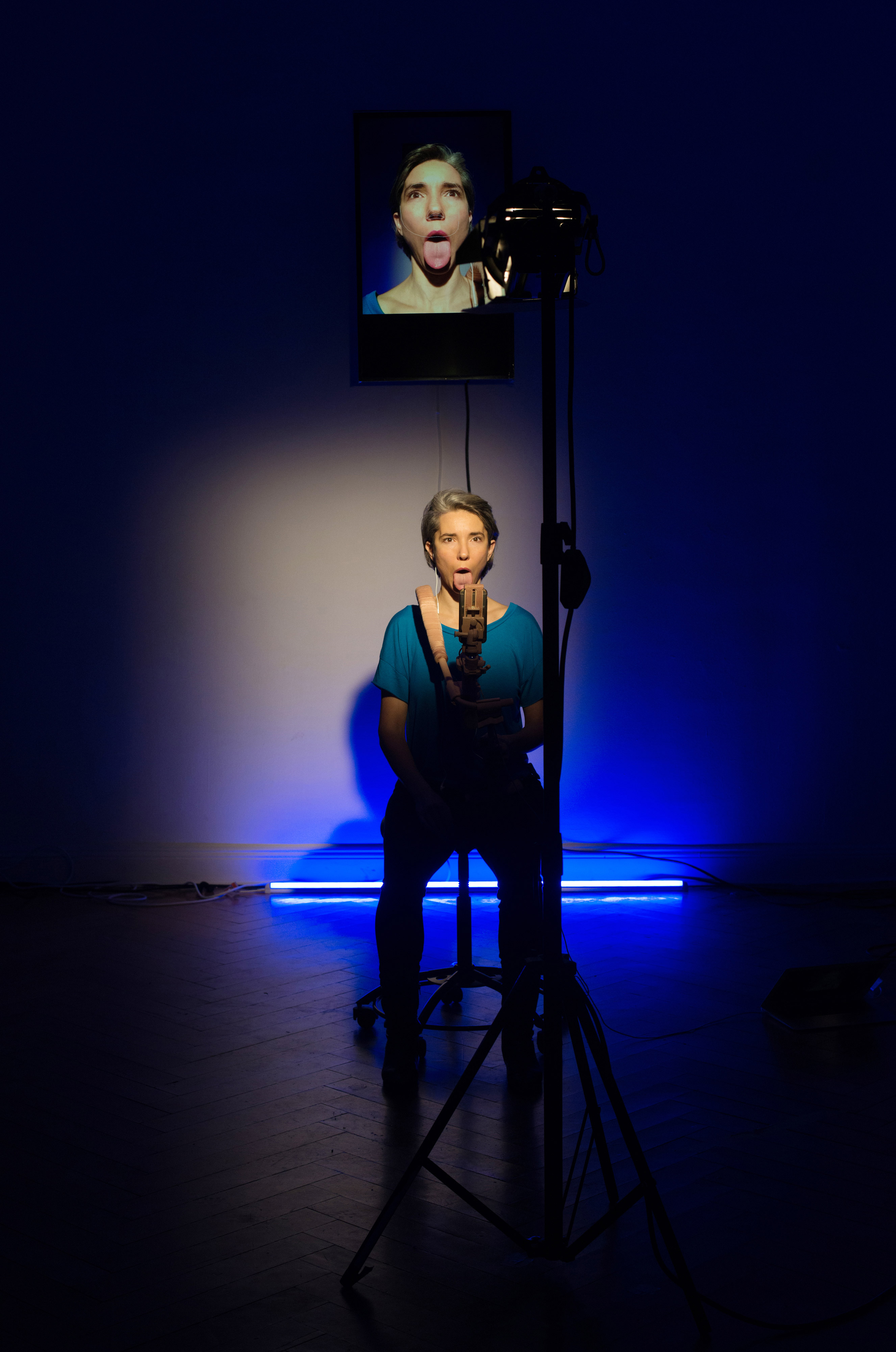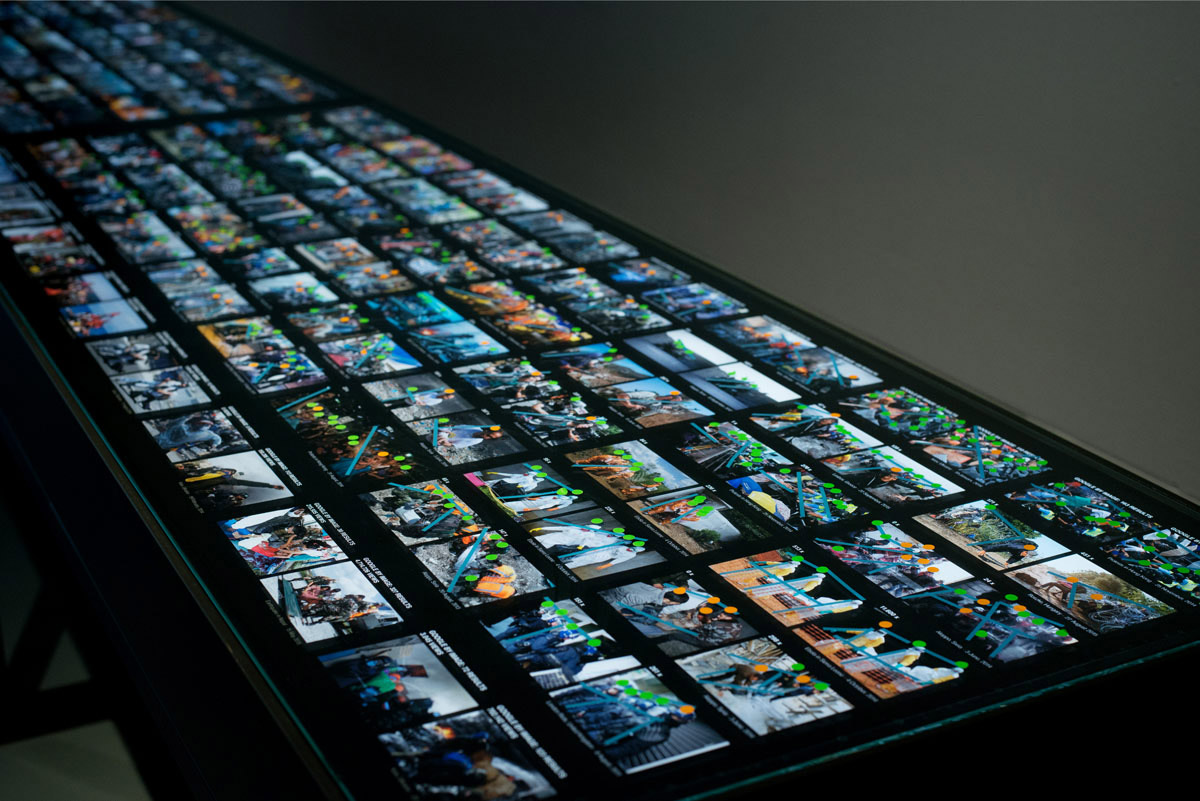As technology becomes increasingly integral to how we communicate amongst each other subtle non-verbal cues are often lost. This performative explores how the power relations between humans and machines and humans amongst each other through machines could be designed more dynamic. By interacting with prototypes that respond in dynamic vocal sounds in a somewhat unpredictable manner to specific bodily gestures, the artist aims to foster a more nuanced relationship between the 'user' and the 'device,' encouraging a fluid exchange of status and control.

A bin-packing algorithm – normally used for the transport or 3d printing industry – is used on a dataset of classical sculptures. This algorithm can calculate the optimal – occupying as less space as possible – packaging of irregular objects in a container. From this, a selection of the results are translated in a choreography for four dancers – designed in collaboration with choreographer Marjolein Vogels - performed live. Sound is created with the help of two Kinect depth scanners that are triggered by the movements of the dancers.
A bin-packing algorithm – normally used for the transport or 3d printing industry – is used on a dataset of classical sculptures. This algorithm can calculate the optimal – occupying as less space as possible – packaging of irregular objects in a container. From this, a selection of the results the results are translated in a sequentially 3d scanned choreography for four dancers.

A bin-packing algorithm – normally used for the transport or 3d printing industry – is used on a dataset of classical sculptures. This algorithm can calculate the optimal – occupying as less space as possible – packaging of irregular objects in a container. From this, a selection is flattened into a relief and CNC- milled.
linelinelinelinlein

In this video we see on one screen emotions that are being expressed by actress Marina Miller Dessau. On the right screen the observed components of facial movements are re-enacted the day after.
The result is a non verbal exchange between computerized movements and their corresponding emotions, in which the detection technique is triggered by the emotions but also the other way around.
In this video work the artist uses this decoding system of emotion recognition software to turn the process around. Here - instead of detecting Action Units - a computer is used to generate a random string of these AU’s. In this way complex and maybe even non-existing emotion expressions are discovered. These randomly formed expressions, played in random order, is then analysed by professional emotion recognition software again.
This work explores deconstructed facial expressions according to the Facial Action Coding System. This system forms the basis of contemporary emotion recognition software. With the help of the tracking mechanism of a mobile phone the performance demonstrates a computational approach to our emotions.
This drawing bot consists of a combination of two rudimentary neural networks. One is fed by the constant data–stream of anarchistic message boards like 4-chan. Out of this data the algorithm seeks out sentences on the subject of artificial intelligence. With simple statistical analyses (probablity of chains of words) the AI generates sentences. When writing down these sentences the bot tries to generate handwriting thanks to another deep learning algorithm (RNN with Tensorflos). The result are absurdist sentences which are written down in an expressionistic drawing style.
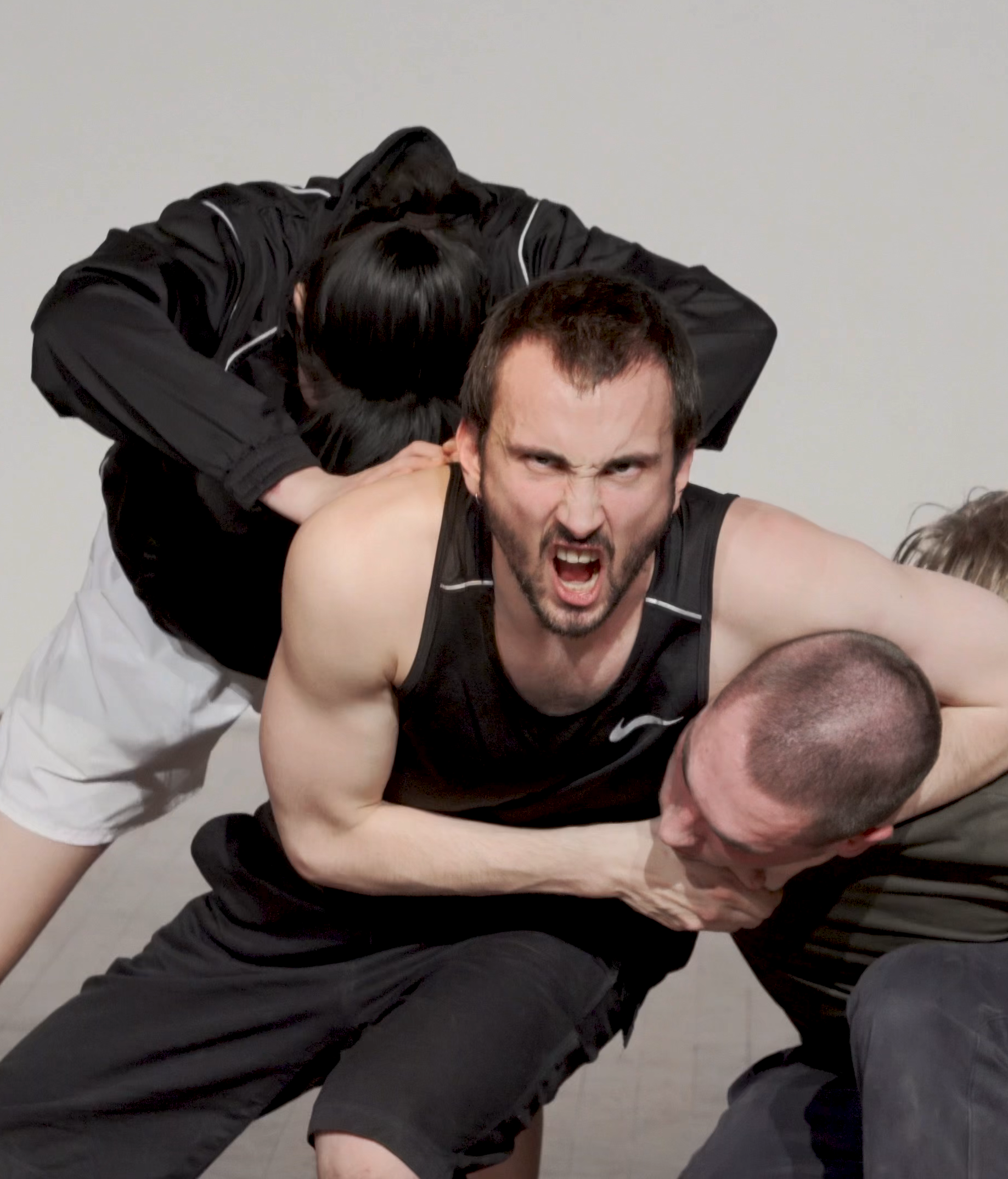
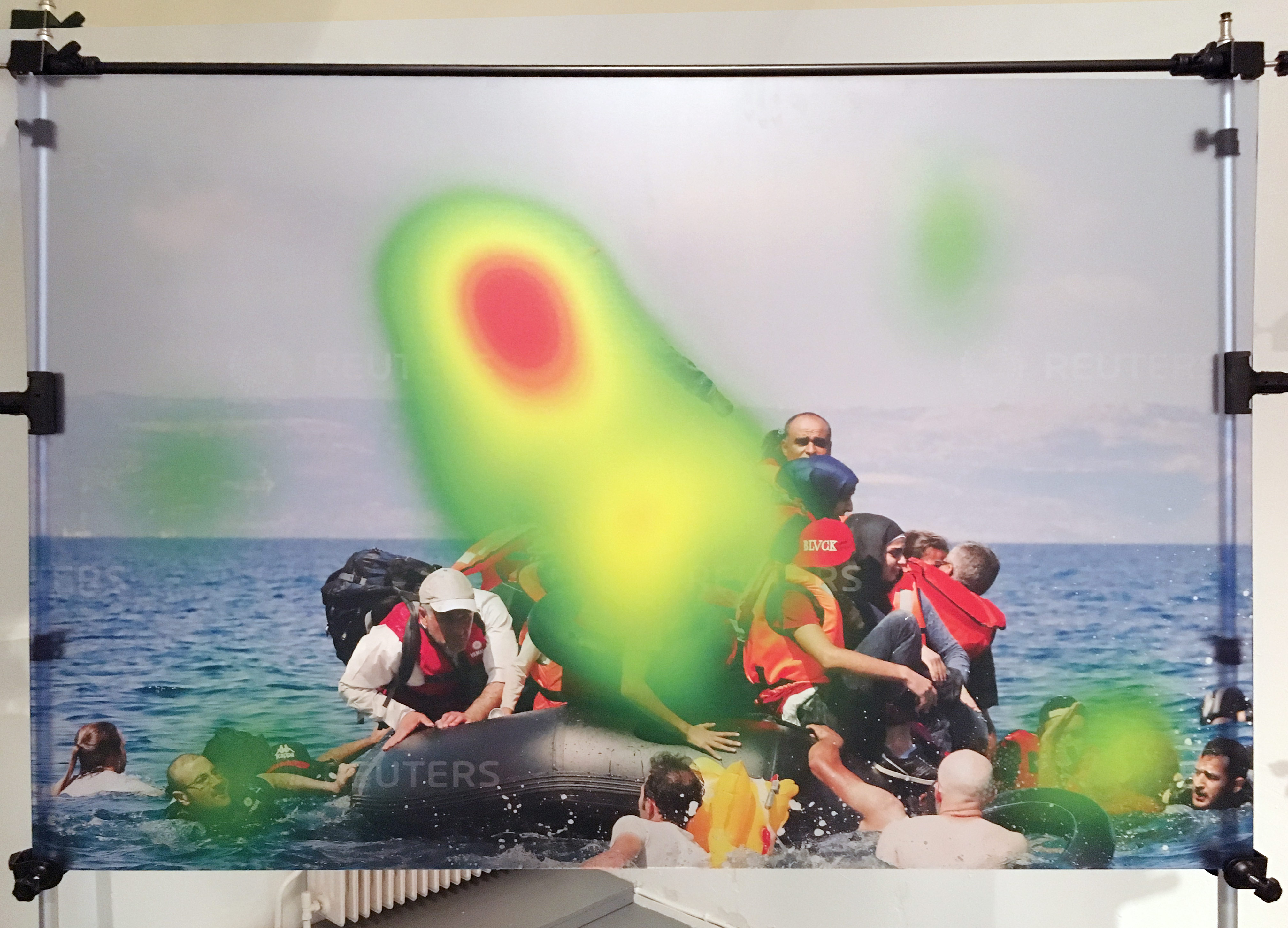
2018
Untitled
c-print, stickering

